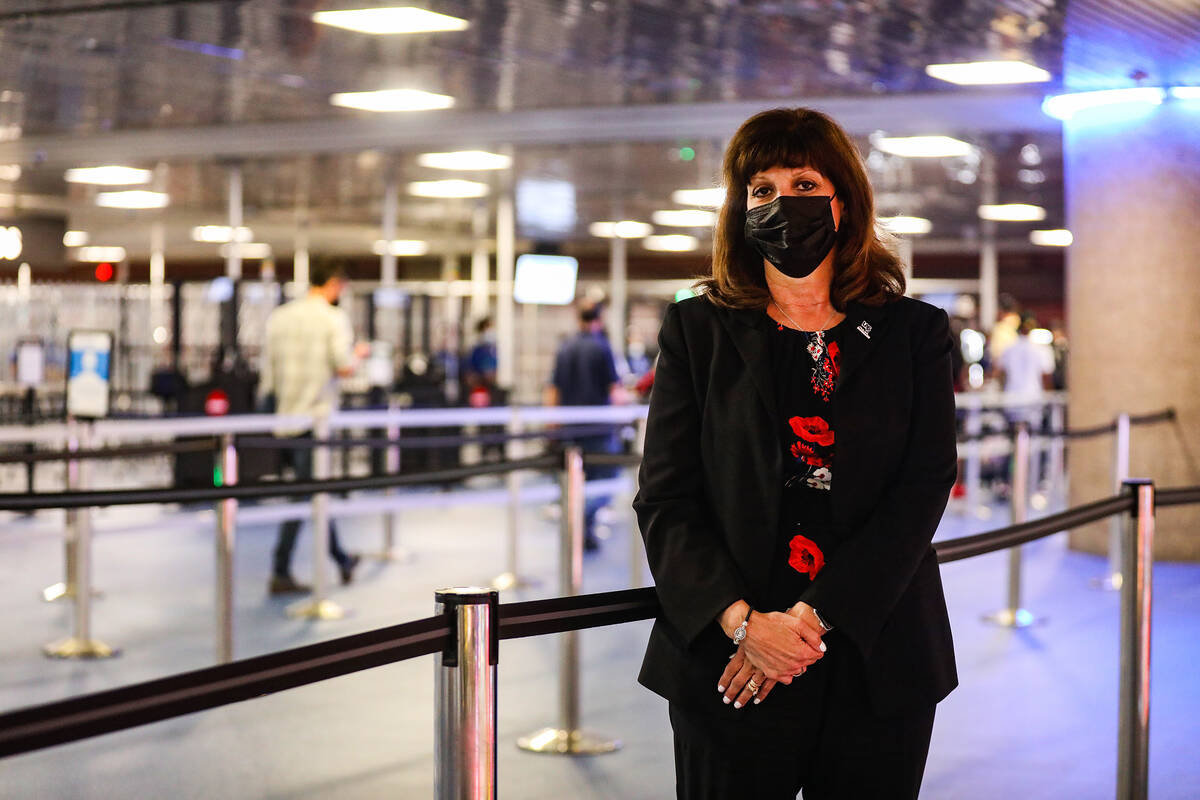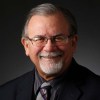Second-in-command steered quick McCarran airport reopening after 9/11
How did McCarran International Airport become the first commercial airport in the country to reopen after the 9/11 attack shut them down?
When American airspace was closed after the catastrophe, McCarran’s top executive was stuck in Canada.
The job of negotiating through the chaos of the aftermath of two jet airliners slamming into New York’s World Trade Center and another into the Pentagon in Washington D.C. fell to Rosemary Vassiliadis, then the deputy to Clark County Department of Aviation Director Randy Walker.
Walker and several other key McCarran executives were attending a conference in Montreal when the Federal Aviation Administration grounded all air traffic hours after leaders determined the United States was under attack by terrorists.
Vassiliadis, who now holds Walker’s job as director at McCarran, was thrown into the role of coordinating operations at an airport that served Southern Nevada’s all-important tourism industry.
Margie Radcliffe, who on 9/11 was the special agent in charge and manager of the FAA’s Las Vegas Civil Aviation Field Office, praised how Vassiliadis handled the crisis.
“You always know she’s going to do the right thing, make the right decision for the right reasons and she’s uncompromising in that way,” she said. “She always makes decisions based on what is the right, fair and honest thing to do. We need more people like that.”
Vassiliadis has similar high praise for Radcliffe, who she said was “joined at the hip” with her as the tragedy in New York unfolded.
Early phone call
“I received a phone call at home early in the morning from (McCarran’s) control center,” Vassiliadis said. “Any time anybody calls you early in the morning you know it isn’t going to be good.”
And, of course, it wasn’t.
Vassiliadis made it to the airport at around 7 a.m., 74 minutes after American Airlines Flight 11, a Boeing 767 jet with 81 passengers and 11 crew members aboard, crashed into the north face of the north World Trade Center tower, and less than an hour after United Airlines Flight 175, also a Boeing 767, with 56 passengers and nine crew members aboard, hit the south face of the south tower.
Vassiliadis immediately met with Radcliffe and worked to convene the Airport Operators Council, a group of airline station managers, federal agencies and major retail operators. Eventually, there were twice-a-day meetings so that the 100 people in the room could share information.
At around noon, Radcliffe relayed to Vassiliadis that FAA Administrator James Garvey ordered all planes immediately grounded. That meant McCarran was going to be on the receiving end of airliners that weren’t scheduled to come to Las Vegas.
“(Los Angeles International Airport) couldn’t accommodate all the planes that were coming in, so Qantas (an Australia-based airline) landed here. Singapore Airlines was here, even before we had scheduled service from them,” Vassiliadis said. “Dozens of domestic flights came here.”
Nowhere to go
Planes on the ground resulted in unexpected passengers with nowhere to go and no way to get wherever “there” was. Vassiliadis enlisted the help of the Las Vegas Convention and Visitors Authority to contact resorts by blast fax with the message that they shouldn’t count on guests with reservations that night, but there were still plenty of people who needed a place to stay.
When an FAA order arrived to physically close the airport, another problem was realized — McCarran had never closed before.
“We had to get everybody out and lock the doors, which we’ve never had to do,” Vassiliadis said.
Notifying people in the airport of what was happening was tricky because McCarran officials didn’t want to create panic.
“We never wanted people to feel unsafe,” she said. “We weren’t McCarran at that point … we were Las Vegas.”
Radcliffe said evacuating the airport was “total and complete chaos,” but she and Vassiliadis received help from airport and FAA staff.
Vassiliadis and Radcliffe didn’t go home the night of 9/11. It took several hours into the day for Vassiliadis to fully comprehend what had happened and what she had been a part of.
“At one point, I had to disengage myself from what was happening in the world because it just didn’t compute in my mind,” she said. “I didn’t want to get angry at people wanting to use our industry as a weapon for terrorism. I couldn’t watch TV anymore. But we always had somebody watching the national news, somebody watching the local news and I had Margie attached to my hip.”
To reopen the airport, Vassiliadis, Radcliffe and their respective teams had to review and update their security, certification and emergency plans.
Radcliffe said it took 36 hours for everybody on her team to digest what had occurred and what they had been through. She said she felt hurt when the news media pointed fingers at FAA security as being responsible for enabling hijackers to board planes. Radcliffe noted that, at the time, the items carried onto planes by the hijackers — knives and box-cutters — weren’t prohibited
“We were devastated, but we needed to be inspired to do our jobs,” she said. “Our people worked 12 to 16 hours a day through that.”
McCarran’s reopening plan was filed with the FAA the morning after the 9/11 disaster. Aircraft that were diverted to Las Vegas began ferrying out of the city by the next day and Vassiliadis again relied on the LVCVA to notify stranded passengers that they would be able to fly out two days after the disaster as McCarran was the first commercial airport to reopen.
Reflecting on the 9/11 experience, Vassiliadis noted some of the positives.
“We got stronger. The industry got stronger,” she said. “And we got better.”
Contact Richard N. Velotta at rvelotta@reviewjournal.com or 702-477-3893. Follow @RickVelotta on Twitter.


















